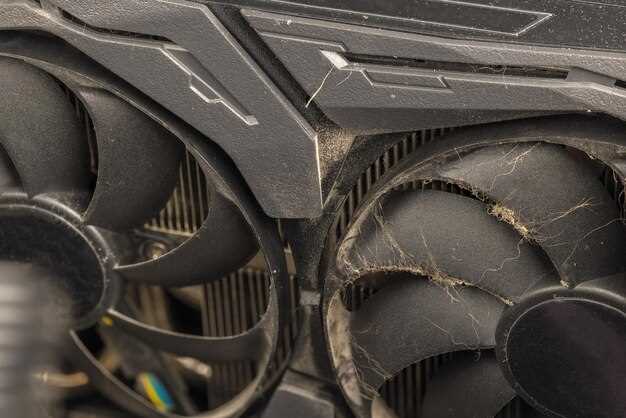
In the high-octane world of extreme racing, every second counts, and maintaining optimal performance is crucial. One of the most significant challenges faced by racers is overheating, which can lead to catastrophic engine failure and diminished performance. A reliable and effective cooling system is essential to prevent these issues and ensure that vehicles can withstand the rigors of competitive environments.
Engine cooling modifications play a pivotal role in enhancing a vehicle’s ability to manage temperatures during intense racing conditions. These upgrades not only help in dissipating heat more effectively but also improve overall engine efficiency. By implementing advanced cooling solutions, racers can significantly reduce the risk of overheating, allowing them to push their machines to the limits without the fear of mechanical failure.
Understanding the dynamics of the system and how various modifications can work in harmony is imperative for any serious racer. From high-performance radiators to enhanced water pump systems, the right modifications can transform a standard vehicle into a high-performance racing machine, capable of delivering exhilarating speed without the drawback of overheating issues. In this article, we will explore the most effective engine cooling modifications that can help elevate your racing experience.
Upgrading Radiators: Choosing the Right Material and Size

Upgrading the radiator in your racing vehicle is crucial for an efficient cooling system, especially under extreme conditions. The right choice of material and size can significantly impact engine performance and reliability.
When selecting a radiator for racing applications, consider the following materials:
- Aluminum: Lightweight and highly efficient, aluminum radiators provide excellent heat dissipation. They are often preferred for their durability and resistance to corrosion.
- Copper: Known for its superior thermal conductivity, copper radiators can offer better cooling in certain applications. However, they are heavier and more susceptible to corrosion compared to aluminum.
- Composite: Emerging in some racing circles, composite materials provide a unique balance between weight and thermal efficiency, but may not be widely available.
Next, size plays a key role in ensuring optimal cooling. Factors to consider include:
- Core Size: A larger core can enhance cooling efficiency by increasing surface area. Assess your engine’s heat output and choose a core that can handle the additional load during racing.
- Fin Count: More fins generally increase heat exchange surfaces, but ensure compatibility with airflow requirements and restrictions in your race setup.
- Transmission Cooler: For high-performance racing, integrating a transmission cooler with the radiator can improve overall cooling system efficiency.
In conclusion, upgrading your radiator is essential for maintaining an effective cooling system in extreme racing environments. The right choice of materials and size will lead to improved engine performance and longevity.
Improving Airflow: Fan Placement and Ducting Techniques

Effective airflow is crucial for maintaining optimal engine cooling, especially in extreme racing environments where overheating can lead to catastrophic failures. Proper fan placement and ducting techniques can significantly enhance cooling efficiency and sustain high-performance levels.
Fan Placement plays a vital role in directing airflow across the engine. Positioning fans directly in front of the radiator ensures maximum air intake, while angled installation can create a more effective wind tunnel effect. It is essential to use high-performance electric fans that can deliver increased airflow volumes, particularly under racing conditions where engine speeds and temperatures peak rapidly.
Additionally, the use of multiple fans can provide redundancy and enhance cooling capabilities. By distributing fans at strategic locations around the engine compartment, such as near the exhaust headers and oil cooler, the engine can maintain lower operating temperatures, reducing the risk of overheating.
Ducting Techniques complement fan placement by channeling airflow effectively. Utilizing smooth, rigid ducts minimizes turbulence and allows for a consistent flow of cool air to critical components. Air ducts should be designed to reduce bends and constrictions that can impede airflow; straight-line pathways are preferable.
Implementing functional vents in the hood and sides of the vehicle can further assist in expelling hot air from the engine bay. This practice not only lowers under-hood temperatures but also creates a vacuum effect, drawing more cool air in through the front grille. Combining this with properly sized air intake systems maximizes the efficiency of the existing cooling system.
Utilizing a combination of fans and ducting creates a comprehensive approach to preventing overheating. Testing various configurations during practice sessions can identify the most effective setup tailored to specific racing conditions. Ultimately, optimizing airflow through strategic fan placement and advanced ducting techniques ensures superior engine cooling performance, allowing for sustained high-speed racing without the risk of overheating.
Cooling Fluids: Selecting the Best Coolants for High-Performance Racing
In high-performance racing, the choice of cooling fluids is crucial for maintaining optimal engine temperatures and preventing overheating. The right coolant not only enhances the efficiency of the cooling system but also protects vital engine components from heat-related damage.
When selecting a coolant, it’s essential to consider its thermal conductivity, boiling point, and freezing point. High-performance racing often exposes engines to extreme temperatures, making it important to choose a coolant with a high boiling point to avoid vapor lock and minimize the risk of overheating during prolonged races.
Another vital characteristic is the coolant’s ability to resist corrosion and deposits. Racing environments can lead to increased wear and tear. A coolant formulated with additives that protect against corrosion will help maintain the integrity of the engine and the cooling system over time, ensuring reliable performance under pressure.
Furthermore, consider using specialized racing coolants that may contain advanced ingredients like propylene glycol or ethylene glycol. These formulations are designed to provide superior cooling performance and improved heat transfer, essential for high-stakes racing conditions.
It’s also wise to assess the compatibility of the coolant with the materials used in your engine and radiator system. Different coolants can react differently with aluminum, plastic, and other materials, impacting the overall longevity of the cooling system. Always refer to the manufacturer’s recommendations and perform compatibility checks to avoid any potential issues.
In summary, selecting the best coolant for high-performance racing requires careful consideration of its thermal properties, corrosion resistance, and compatibility with engine materials. Making informed choices ensures that the cooling system operates efficiently, ultimately preventing overheating and maximizing performance on the track.




